“I love the feeling of being anonymous in a city I’ve never been” – Anonymous (typical)
13TH AUGUST, 2016.
“Cabin crew, prepare for landing”, the speaker buzzed to life.
I detached my face from the flight window to make sure I had heard the Captain correctly, paused for a second, and pressed it right back. This was odd. The scene below showed endless pine woods, punctuated with the occasional lake. Hardly the approach I had expected to the capital of Scandinavia’s largest country. Contrary to my expectations however, the scene did not change, and our landing at Arlanda Airport was, as I would put it, in the middle of nowhere.
But from the moment I stepped out of that flight on that morning, until I left 127 days later, I was nothing short of hopelessly in love with this city. The world’s smallest “big city” they call it, although the term doesn’t quite sum up the soul of Stockholm – the extremely beautiful capital of Sweden.
I call this part (the first in a three-part series – wouldn’t call it a trilogy just yet) Islands of the Kings, because I could find no other suitable description for the wonder and majesty associated with Central Stockholm. There’s everything that’ll make you fall in love with it- Old buildings, towering church spires, waterfronts, quaintly dressed soldiers of the Kings’ Guard, and buzzing nightlife.
***

Central Stockholm is divided into four main regions – Kungsholmen, Norrmalm, Östermalm, and Södermalm. And this, is truly the heart and soul of this beautiful city. It’s a melting pot of activity, culture and nature, and it tends to leave you dizzy. At least that’s what happened to me after my first visit. Over the course of my entire stay in Stockholm, I found myself end up in one of the above four regions surprisingly often. Be it long walks by the waterfront, a casual brunch at an open-air restaurant, or a visit with a fixed itinerary – Central Stockholm was my go to part of the city. Pretty much every time. And the beginning of this trip through the Islands of the Kings can only start with one place – Stockholm’s Old Town.
GAMLA STAN
The nomenclature is pretty simple. “Gamla” translates to “old” in Swedish, and “Stan” is the colloquial term for “Staden”, meaning town. But Stockholm’s Old Town rises above and beyond its relatively simple name, and is a treasure trove of wonders. Built in the 13th century, The Old Town has seen its fair share of revolutions, massacres and glory, but has withstood it all, and emerged as one of the most charming destinations in Scandinavia. Cobbled streets, pastel-hued buildings, and open-air restaurants- reason enough for this place to be the most sought-after destination in Central Stockholm. Officially called Staden mellan broarna (The Town between the Bridges) until 1980, the tiny island is host to most of Stockholm’s main attractions, the first of which greets you as soon as you enter.
“Officially called Staden mellan broarna (The Town between the Bridges) until 1980, the tiny island is host to most of Stockholm’s main attractions”
KUNGLIGA SLOTTET (THE ROYAL PALACE)
The Royal Palace of Stockholm is a colossal baroque wonder, and is located amidst one of the most scenic settings for a royal household. Bound by water on three sides, this massive building is serves as the official residence of the Swedish Royal Family (although the current royal family is housed in the nearby Drottningholm Palace).

Although I never had the chance (or the inclination, to be honest) to visit the interiors, I have spent hours on end walking around it, exploring the waterfront, chasing seagulls (yes, I’m a horrible person), and wandering aimlessly around its cobbled alleyways. The changing of the Royal Guard at noon every Sunday is a sight to behold, and is the highlight of the many attractions here at the Royal Palace. Soldiers marching in full livery, horsemen bearing the Swedish flag, and the band making the air buzz with the sound of saxophones and drums – there’s drama everywhere in this performance which goes for half an hour, and the applause creates a tumult in the amphitheatre-like surroundings of the palace courtyard.
And as you walk away with a feeling nothing short of euphoria, the wonders of Gamla Stan unfold with every passing cobbled street.
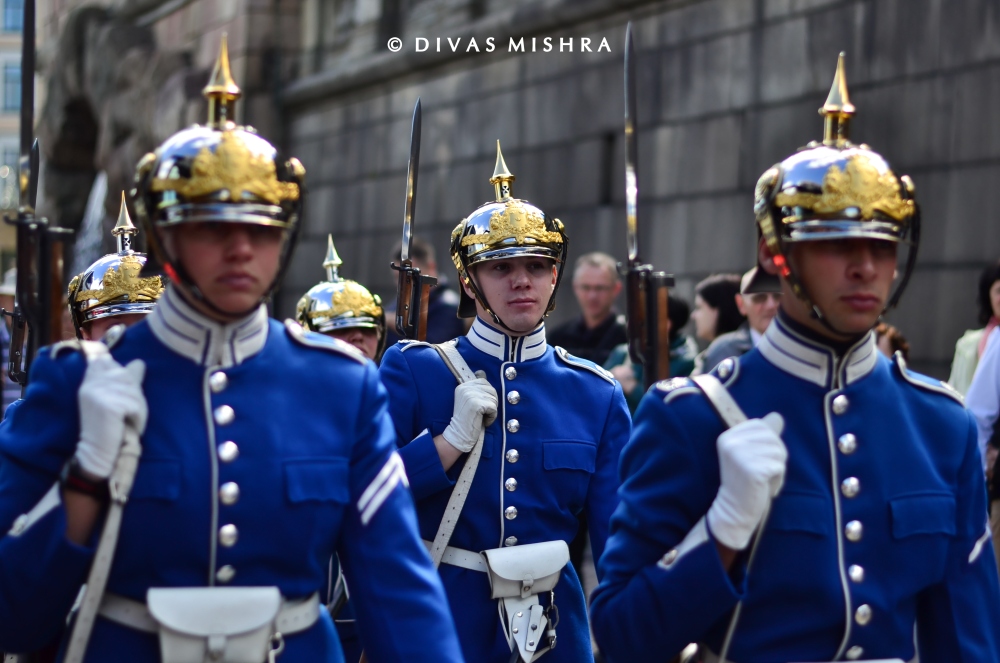
STORTORGET (THE OLD TOWN SQUARE)
As the streets get narrower, and the crowd increases despite that, you know there’s something big coming up. And as it so often happens, the narrow alleys suddenly give way and you find yourself in the middle of a square buzzing with life and activity. This is Stortorget – the central square of Gamla Stan, and it is a livewire.

The tall spires of the Storkyrkan and Tyska Kyrkan loom on either side of the square, which is dotted with open air cafés, pastel coloured buildings, a central fountain, and of course, the Nobel Museum. You’ll find musicians performing here for some change, and hawkers selling sweet treats and candy. Open air markets are a common feature here, and in the weeks leading to Christmas, you find tribes from the Swedish Lapland – far away in the north, come here and sell handicrafts to make a living.
“And as it so often happens, the narrow alleys suddenly give way and you find yourself in the middle of a square buzzing with life and activity. This is Stortorget – the central square of Gamla Stan, and it is a livewire.”

It’s hard to digest the fact that this very square was the site of a gory bloodbath a few centuries ago. Stortorget was the place where the Stockholm Bloodbath of 1520 occurred, when, during three days, the Danish-Swedish king Christian II beheaded and hanged 90 people (Somewhat similar to Tallinn’s story maybe?). However, the fact remains that this was very long ago, and there’s no sign of such an event anywhere in this pretty square.

Food-wise, you’re pretty much spoiled for choice, if European fare is something you like. The many alleys of Gamla Stan have got you covered – some even offer a table with a view. Looking out towards Slussen and its many ships fills you up somehow. And a walk by the waterfront after a meal is enough to seal the deal – you’re in love with this part of the city before you know it. At least until you cross the bridge and visit Kungsträdgården, Nybroplan, and the island of Djurgården

KUNGSTRÄDGÅRDEN
The “King’s Garden” is probably the most befitting name one could give to this charming place. Just across the bridge from Kungliga Slottet, is an avenue of trees which leads you into the park. It is the centre of all activity in Central Stockholm, throughout the year – open air concerts, cafes, protests, and festivals. You name the occasion, and this little park would have been a host to it in some part of history.
“Cherry blossoms during spring, people sunbathing during the summer, stunning fall colors during autumn, and a complete ice-skating rink during the winter – it’s pretty obvious that Kungsträdgården would be up and about throughout the year”
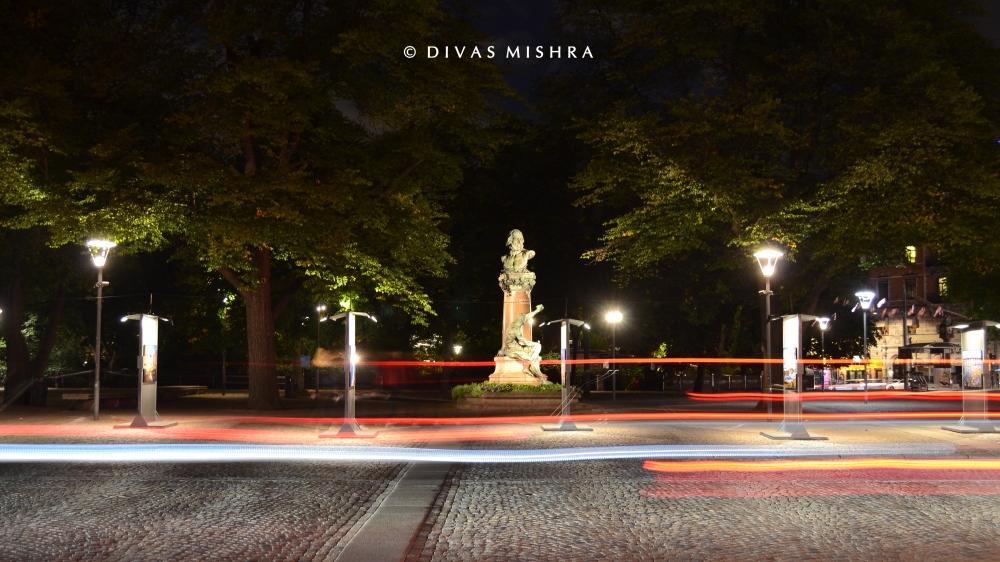
And none of these events, no matter how violent they are, do anything to take away the sheer beauty and charm of this place. Cherry blossoms during spring, people sunbathing during the summer, stunning fall colors during autumn, and a complete ice-skating rink during the winter – it’s pretty obvious that this park would be up and about throughout the year. And a stroll within and around it would give you plenty of insight into the local architecture, which, as I have mentioned several times, is nothing short of fascinating.
NYBROPLAN & STRANDVÄGEN
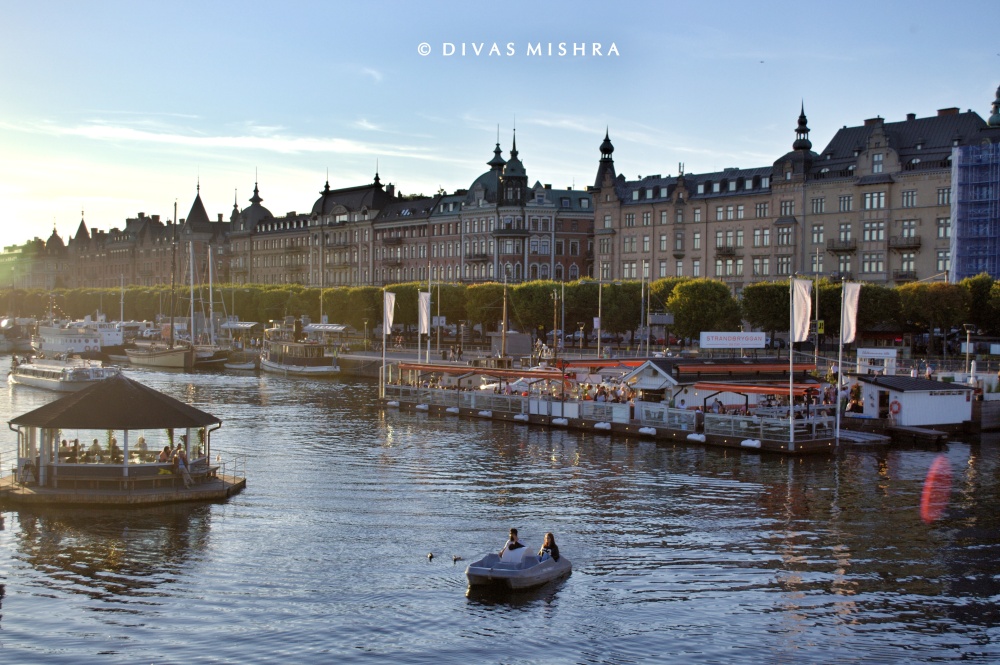
Literally translating to “New bridge square”, Nybroplan is Stockholm’s primary ferry hub. Ferries from here will take you to the greater Stockholm archipelago – a system of over 30,000 islands and islets, the largest of which are towns in their own right. And the strand which starts from Nybroplan, and ends at Djurgårdsbron (the bridge connecting Djurgården with Stockholm) is almost always bustling with activity. While there isn’t one particular landmark you’d want to visit (there are several), just spending an evening along the waterfront, or taking a circuit trip to Djurgården by the tram is enough to make your day.

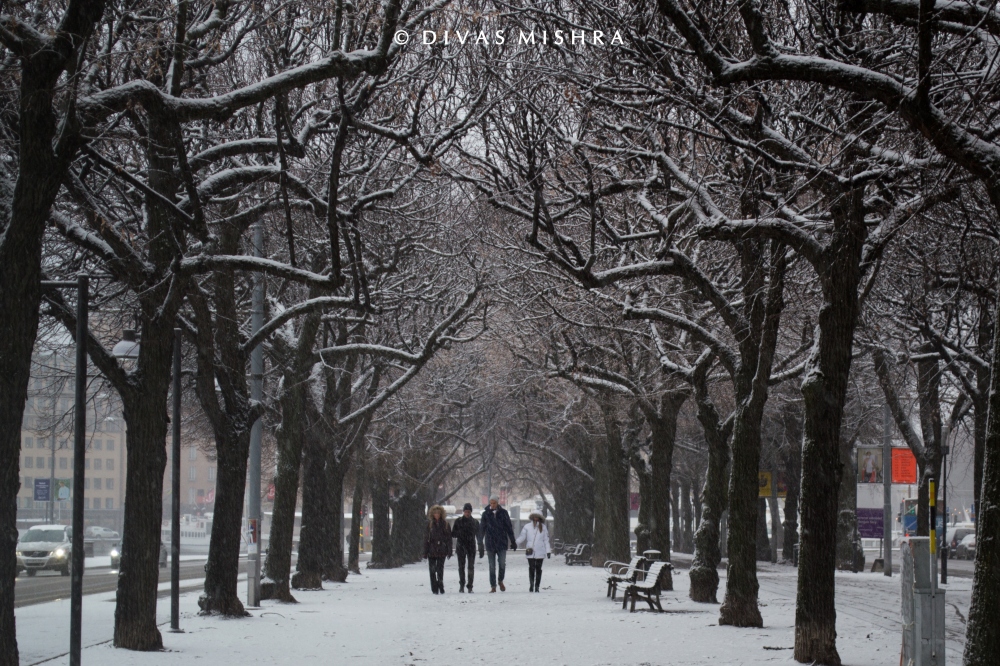
And speaking of Djurgården, brings me to my next destination in this not-so-short list.
DJURGÅRDEN
Continuing with my opening line tradition of carrying out translations, I’d like to point out that Djurgården translates to “The Game Park” (very literal here). And this little island is so full of wonders that it could claim an entire blog post on its own. The island contains many of Stockholm’s most famous landmarks, and is a popular destination throughout the year, for several different reasons. Oddly enough, the island of Djurgården is connected to the rest of the city only by the tram and bus – probably owing to its’ size, which is very small (a tram trip around the entire island takes less than 10 minutes).

However, from the moment you enter it, you know that Djurgården (also known by the more traditional name – Waldemarsudde) is not your average Swedish island – the only entry to this island takes you through the very beautiful bridge – The Djurgårdsbron, and you are immediately greeted with lush greenery, the skyline dominated by the spires of the Nordic Museum and the hull of the ship-shaped Vasa Museum.
As you walk on, you come across Skansen, the world’s first open-air museum, which educates the layman about Swedish culture and architecture, and also houses the only zoo within Stockholm city limits. And the annual Christmas market is a collector’s paradise, I’ve been told (never had the chance to visit it). All in all, Skansen is highly recommended for families with children, and there are enough things to keep you busy for the entire day.
Delving deeper into the island brings you to the illuminated structures of Gröna Lund – the amusement park. At 15 acres, this doesn’t come close to qualify as a “large” amusement park. But what this little park lacks in size, it more than makes up in its charm. Complete with carousels, roller coasters and every other ride to fuel any child’s imagination, this amusement park is a day trip on its own. And at night it turns into a galaxy of lights, floating silently above the quiet backwaters of the Baltic.
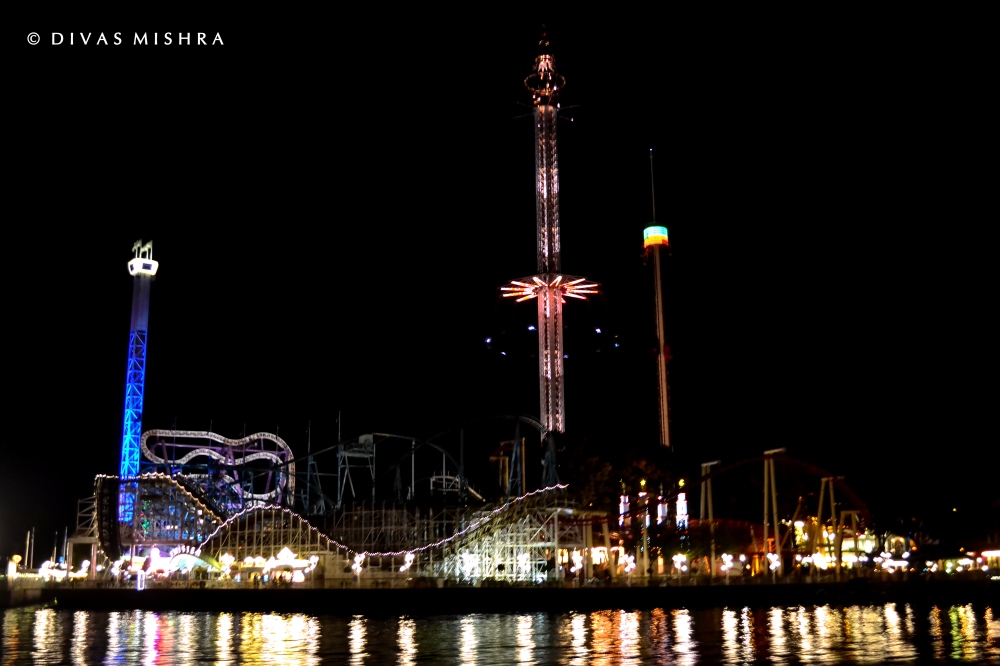
“…at night it turns into a galaxy of lights, floating silently above the quiet backwaters of the Baltic.”
I could go on about this little island – speaking about the legendary ABBA museum – a tribute to the band which is the most shining example of pop music in Sweden; describing the promenade of the island – a waterfront like no other; or telling you about all the little houses dotted around it, with boats anchored to each of their private jetties. However, there’s more of Central Stockholm to cover, and it’d be good to move on.

STADSHUSET – THE STOCKHOLM CITY HALL.
Located at the eastern tip of Kungsholmen, and facing the lake Mälaren, The Stockholm City Hall is one of the most prominent structures in the entire city. Completed in 1923, the red spire of the hall (at 106 metres) towers above the city’s skyline. Like every other city hall, it is the centre of most administrative and ceremonial activities of the country. But what it’s truly known for, is the annual Nobel Prize Banquet, an event that needs no introduction.
“Visiting Stadshuset was all about going there and doing nothing. Nothing apart from watching the sun set, watching couples huddle together when it’s cold, about watching the city come to life at night.”

Most of the visits to this place during my stay were about sitting for hours on end, watching waves from the lake softly lapping the shores of the island, and the best part was watching the sun set (as early as 3:30 PM during winter) with twinkling lights coming to life in Södermalm, on the other side of the lake.
Visiting Stadshuset was all about going there and doing nothing. Nothing apart from watching the sun set, watching couples huddle together when it’s cold, about watching the city come to life at night.
DROTTNINGHOLM PALACE
Though not part of Central Stockholm, this post would be incomplete without mentioning Drottningholm. The official residence of the Royal Family is located a little away from the city centre, in the Ekerö municipality, and on the shore of Mälaren. Literally translating to “The Queen’s Islet”, Drottningholm is one of the three UNESCO world heritage sites located in Stockholm.


And it gets the title with good reason – the palace is huge, and is full of landmarks dotted all over its vast expanse. The Baroque Garden, the Chinese Pavilion, and the Drottningholm Theatre are just few of the highlights that can be found here. However, even if you are not particularly interested in visiting the Palace in itself, and witnessing its opulence, the garden’s will keep you busy for hours on end, and impressive statues depicting the chastisement of evil will keep you staring.


SKOGSKYRKOGÅRDEN
The Woodland Cemetery of Southern Stockholm is a place of reverence. And it is beautiful to a fault. Built in the early 20th century, this cemetery is huge, and is located inside a pine forest. And a walk amidst these silent woods would be enough to bring you peace.
This place was declared a UNESCO World Heritage Site in 1994, and its biblical landscape is just one of the many factors that supported its claim. The Resurrection Chapel, The Path of the Seven Wells, and the meditation hill are just some of the highlights of this beautiful cemetery, and it is the site of an annual gathering of Swedes, held during Halloween to pay respects to the loved ones who have passed away. It’s a beautiful affair, complete with songs, lights, and candles, and it is an event which I unfortunately missed.
Nevertheless, coming to this place was nothing short of a balm to soothe a stressed mind, and for that reason at least, Skogskyrkogården will always be a special place.
***
16TH DECEMBER, 2016.
My flight back to India was due to leave within the next 24 hours, but as on many previous occasions, I found myself at the waterfront of Gamla Stan. Again. It was snowing quite a bit, and was frightfully cold, but the visit to the Christmas market at Stortorget had to be made.
The spread was amazing, and the Sami tribes from the Swedish Lapland far up in the north, had come to sell their handicrafts – making their living in order to face the long, hard, winter ahead.
My hands were full with small memories that I’d be taking back home, and I stopped in front of one particular stall, selling key chains made out of Reindeer antlers (they shed them every winter, nothing to be alarmed). The stall owner, a tribesman in his 80s gave me a toothless smile as he handed me my purchase.
“Tack så mycket”, I replied, with a smile.
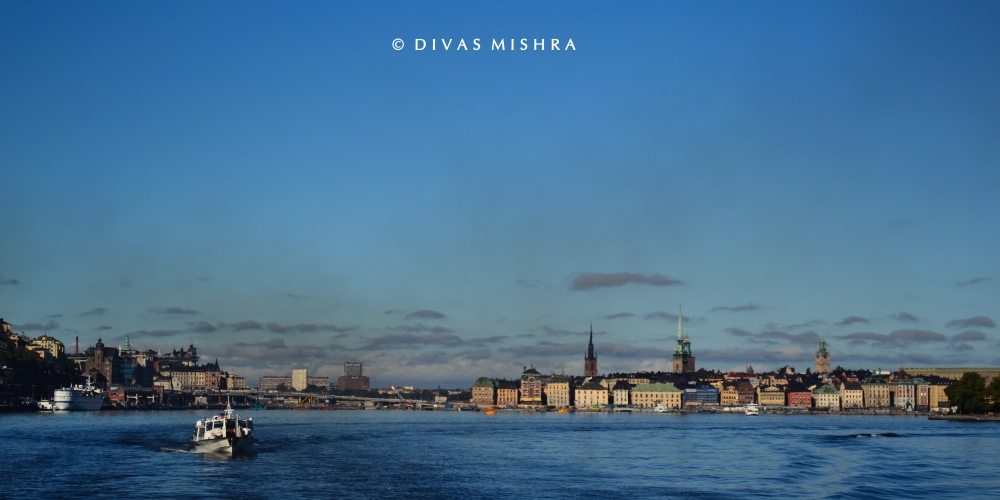
***
VITAL STATISTICS:
- Location : Stockholm is the capital of Sweden, located between one of the country’s Great Lakes – Mälaren, and the backwaters of the Baltic Sea.
- Getting there : Arlanda in Stockholm is one of the busiest airports in Scandinavia, and is well connected to all major airports in Europe and around the world.
- Timing your trip : This is a tough one. Having lived in Stockholm for almost five months, it would be tough to pick a favorite time of the year. I would personally recommend late summer, just before the onset of fall – the days are long, the weather is pleasant, and colors are beautiful.
NOTE : All the places I visited in Stockholm were over a large duration of time. If your planned stay is short, be sure to have an itinerary to support everything that you want to see/visit.
- X-Factor : There isn’t one that I could single out. But yes, I would say any waterfront in Central Stockholm will have you coming back for more- you cannot get enough of them.
- This trip is not for you, if : There’s something for everyone here, so this section is largely irrelevant.
- The Stockholm Pass: The Stockholm Pass is a great option to get around the city if you’re visiting for a short span of time. At SEK 535.50 (approximately EUR 50) for a 24-hour card, you get free transport throughout the city, free entry into most of its’ paid attractions, and attractive discounts at many of its’ major restaurants and eateries. Highly Recommended.
***